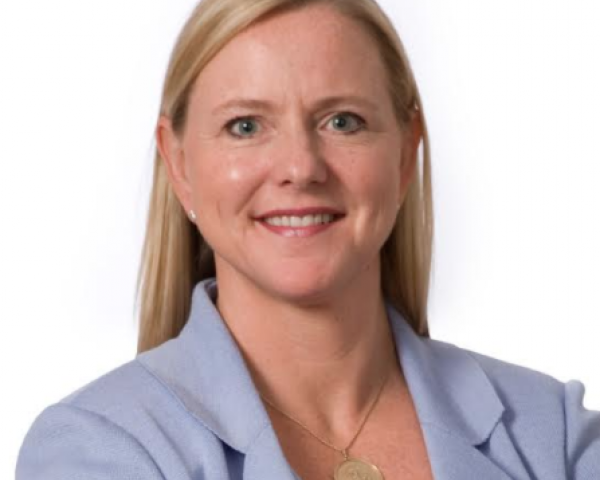At first glance, innovation and risk management may seem diametrically opposed—the limitless possibilities of “what could be” being dragged down by worries about “what could go wrong.” This construct is far out of date, as leading risk managers have increasingly become vital partners in shaping their organization’s business strategy and enabling innovation. As director of business risk and insurance for one of the world’s most innovative companies, Loren Nickel of Google is charged with managing both the company’s everyday risks as well as an ever-evolving array of emerging ones. So how does he protect the company from risks in a fashion that still champions the innovation so vital to its long-term success?
Aon sat down with Nickel, the recipient of the Risk & Insurance Management Society’s 2017 Risk Manager of the Year, for a wide-ranging conversation on how he strikes the right balance between innovation and risk. He shared his insights on integrating data and analytics in risk management, enabling innovation and effectively engaging with the C-suite.
What is your philosophy of risk management?
Loren Nickel: Our approach is rooted in analytics and quantitative analysis. It helps that Google is a company full of engineers. My team likes to quantify things that people may sometimes assume can’t be quantified. This process involves many different elements of analytics, including quantitative and actuarial analysis. So we use those frameworks to set priorities and strategic direction and to make sure that our current approach supports where the company is going to be in the next few years.
Analytics helps us make the best possible decisions. I don’t think anyone could do the amount of risk management work that we’ve done without analytics. However, you do have to start from the ground up and build an analytics platform to make the changes that we’ve made to our organization. It’s about capturing information in new and different ways. With more accurate and timely information, products can evolve and improve over time.
See also: The Current State of Risk Management
How do you position risk management to promote innovation?
Loren Nickel: We’re not the “no” team—we’re not here to tell our colleagues how not to do things. We’re trying to guide them in the best way possible to create their products. That’s really how I would want to be perceived—that we’re trying to enable innovation. Google is working on several different kinds of emerging risks, and our team is involved. Our job is to promote good behavior so that innovation can continue.
To make things better, you have to change, and that’s a constant process. If you’re just putting up barriers, you only see the result if someone tries to break through them. The problem is that you may be aware of just one out of 10 people who bumps up against these barriers; the other nine people might have given up because you’ve created too much process for them. They see the barriers and decide to focus on another area where there is less friction. It’s kind of the economics theory in the sense that all of these barriers to entry have a real influence on the company itself.
Something I always push back on with my team is prioritization. If programs aren’t extremely material to the organization, we shouldn’t set up processes that limit or restrict innovation, ability or speed. When the risk and potential damage aren’t material, these processes just serve to slow down the organization quite significantly. Our efforts are focused on making sure that we’re really adding value and not just creating process for process’ sake. We often have to test those boundaries, meaning that, if you just remove the process, what happens? If the sky doesn’t fall, then that process is probably not something you need.
How can you advise the C-suite more effectively?
Loren Nickel: With my [risk management] team, we focus on translating technical information in a way that makes it very palatable to the C-suite. Packaging analysis for senior leaders is a very different challenge, and it’s critical to do so in a way that’s theoretically correct and gives the right answer.
Building credibility and working to help senior leaders understand what is really critical to the business is a constant process. To establish credibility, you need to have knowledge and experience and be able to communicate that expertise in a nontechnical way. This task certainly sounds easy, but it is difficult. You often have to work internally on projects that maybe aren’t really risk-related, but someone needs your help. You do that to build credibility. Over time, as people gain a greater understanding of the value we deliver, they will seek out our opinions on different issues.
It’s also important for our team to take a longer-term view of risk. When a team seeks our guidance, we’re typically closer to laws and regulations so we can direct them in the best way possible. Often, regulations are unclear or evolving. Take self-driving cars: Clearly, regulations will change over time, and it’s important for us to work with our internal teams around those issues.
See also: 4 Steps to Integrate Risk Management
What fuels your passion for risk management?
Loren Nickel: I believe that we are enabling changes in technology and in the world. For us the passion is basically enabling all of those technologies to happen more quickly and in a safer way. And the impact from a company like Google is just earth-shattering in terms of its magnitude. I think our team makes a disproportionate contribution compared with some other companies or places, just based on the size and scale of the organization and the amount of innovative work that’s coming out of the company.
Q&A With Google on Innovation, Risk
"We’re not the 'no' team—we’re not here to tell our colleagues how not to do things. We’re trying to enable innovation."






